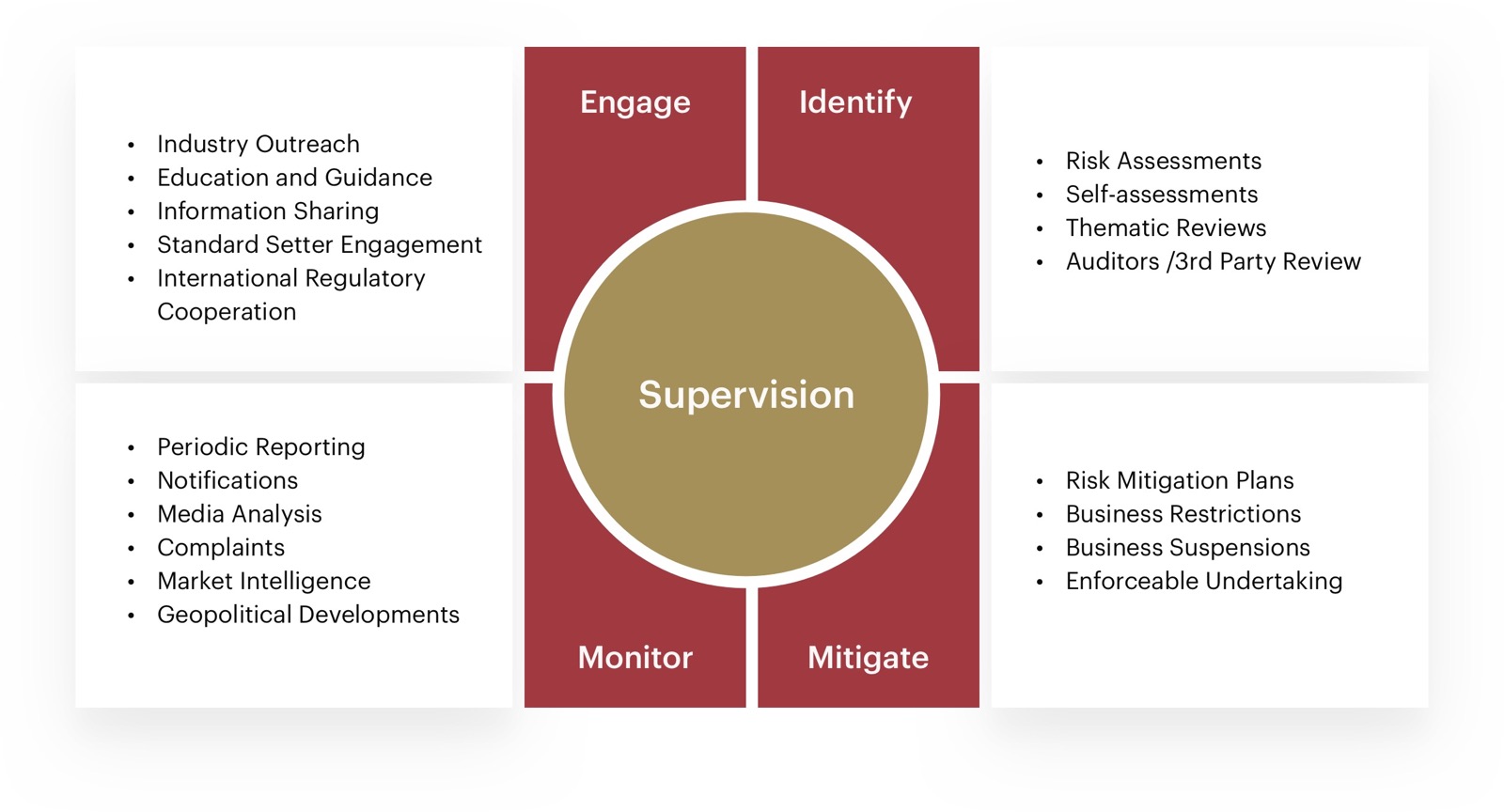

The DFSA utilises numerous tools to conduct its supervisory work.

The DFSA requires an open, transparent and cooperative relationship between itself and the Authorised Firm. The DFSA seeks to maintain an up-to-date knowledge of an Authorised Firm’s business. Therefore, an Authorised Firm is required to keep the DFSA informed of significant events, or anything related to the firm of which the DFSA would reasonably expect to be notified.
The DFSA encourages open and proactive communication with all Authorised Firms. To achieve this, the DFSA follows a multi-channel approach to communication with Authorised Firms:
For more information regarding being supervised by the DFSA, please refer to the DFSA Rulebook and the Regulatory Policy and Process Sourcebook.
There are two general types of supervisory engagement under which all Authorised Firms are supervised. The types of supervision are “Team Supervision” and “Relationship Management.” The type of supervision that is applied to an Authorised Firm is determined according to a risk-based assessment of the risks each Firm presents to the DFSA’s regulatory objectives.
Our risk-based approach to supervision uses the two dimensions of impact and probability to measure the risk each Authorised Firm presents to the DFSA’s objectives. Each Authorised Firm is assigned a separate impact and probability rating. These ratings, in conjunction with supervisory judgement, are used to determine the level of supervisory resource that is applied to each Firm.

A combination of quantitative sectoral and firm-specific factors are used to determine the impact and probability risk of each Firm. We then apply supervisory judgment to consider reputational, and other non-quantifiable, risk factors in order to determine the appropriate level of supervisory engagement for each sector and Firm.
Impact is the size of the harm that a firm/risk can do to our objectives. We assess impact in the two categories of financial and non-financial impact.
Probability is the likelihood of a risk materialising and the likelihood that a firm/risk may cause harm to the DFSA objectives if no action is taken. We assess probability within the three dimensions of inherent risk, control effectiveness, and residual risk across the five categories of (1) Business Model, Strategy, and Corporate Governance; (2) Financial risk; (3) Operational risk; (4) Conduct of Business risk; and (5) AML/Financial Crime risk.
For better web experience, please use the website in portrait mode